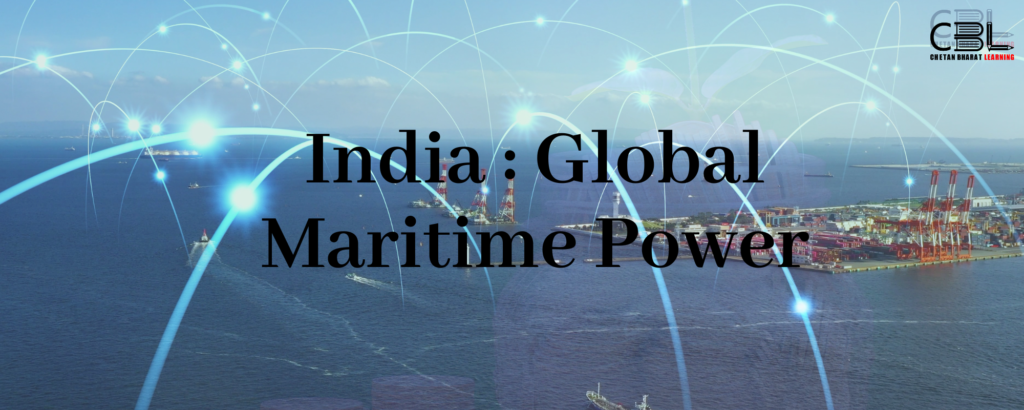Important for
Prelims: Indian Economy
Mains: General Studies III

India : Global Maritime Power
- The recently released World Bank’s Logistic Performance Index (LPI) Report 2023 has brought encouraging news for Indian ports as well as for the country’s logistics sector.
- India has moved up to 22nd rank in the global rankings on the “International Shipments” category from the 44th position in 2014.
- Moreover, the country has also secured the 38th rank on the LPI score.
Reason for Improvement
- Substantial reduction in the dwell time at Indian ports: Dwell time (the amount of time vessels spend in port actively loading or unloading cargo) has reached an optimum level of about 3 days only as compared to 7 in the US and 10 in Germany.
- Improvement in port operational efficiency: The country’s average turnaround time(TRT) of only 0.9 days is amongst the best in the world (in Germany it is 1.4 days, in the US 1.5 days).
- Big Ticket Investments : Large investments in the upgradation of infrastructure in the ports and shipping sector in the past few years. As a result, the capacity at 12 major ports in the country has increased from 871 million metric tonnes (MMT) in 2015 to 1,617 MMT in 2023.
- Improvements in port efficiency and productivity through reforms,
- Induction of new technologies,
- A greater thrust on public-private partnership (~150% increase in the value of operationalisation of PPP projects),
- An overall commitment to the ease of doing business, and
- Decarbonisation (14-fold increase in the use of renewable energy in major ports) along with the Panchamrit commitments.
Govt. Steps in this Direction
- The Harit Sagar Green Port guidelines: It aims to bring about a paradigm shift towards safe, efficient and sustainable ports while implementing sound environmental practices among all stakeholders.
- The National Logistics Portal (Marine): It is a single-window digital platform for all stakeholders including those engaged in cargo services, carrier services, banking and financial services, and government and regulatory agencies.
- The Sagar Setu app: Facilitates seamless movement of goods and services in ports while substantially enhancing the ease of doing business.
- The Major Port Authorities Act, 2021: It grants greater autonomy to major ports.
- The Marine Aids to Navigation Act, 2021: It provides for increased safety and efficiency in vessel traffic services and training and certification at par with international standards.
- The Indian Vessels Act, 2021: It brings uniformity in law and standardised provisions across all inland waterways in the country.
- The Indian Ports Act, 1908: The government is in the process of replacing this with a piece of legislation that is in tune with present-day requirements.
Maritime India Vision 2030
- To develop global standard ports in India, the Ministry of Ports, Shipping and Waterways under the MIV 2030 has identified initiatives such as
- Developing world-class Mega Ports,
- Transhipment hubs and
- Infrastructure modernization of ports.
Practice Questions for Prelims
Consider the following statements:
1. Logistic performance index report is released by World Bank.
2. India has moved up to 22nd rank in the global rankings on the “Infrastructure Quality” category
Which of the above given statements is/are incorrect?
a) 1 only
b) 2 only
c) Both 1 and 2
d) Neither 1 nor 2
Ans. b)
Mains Practice Question
With India moving up in Logistic Performance Index, what are the various achievements in the ports and shipping sector in the past few years?




Leave a Reply
You must be logged in to post a comment.